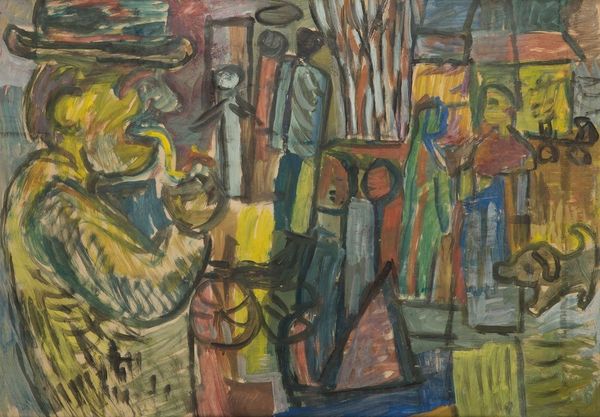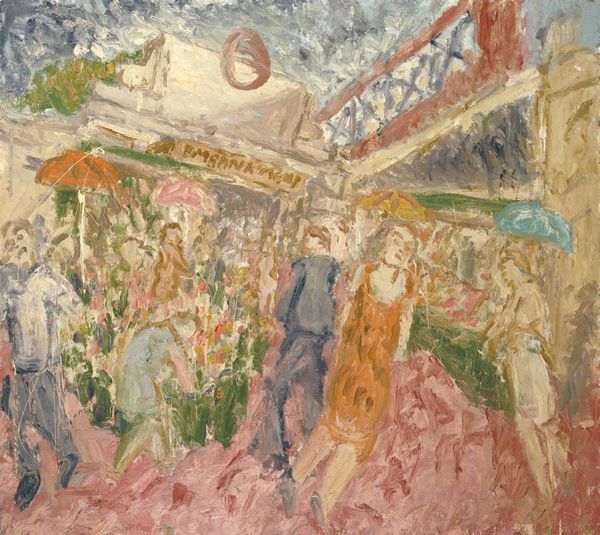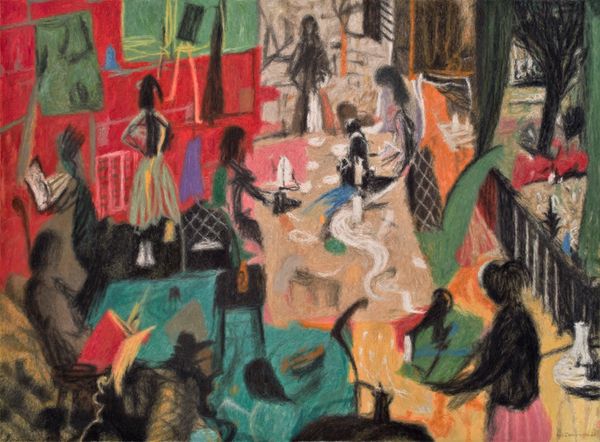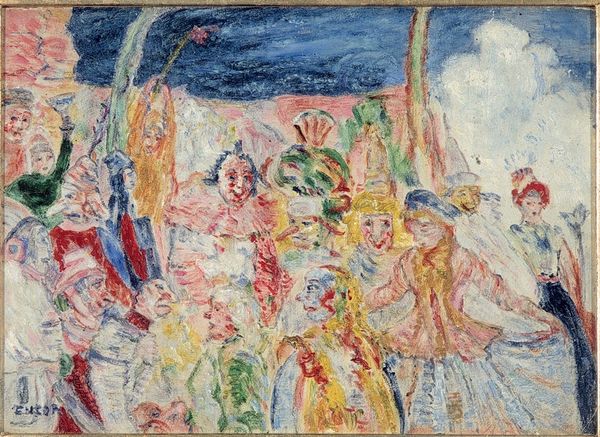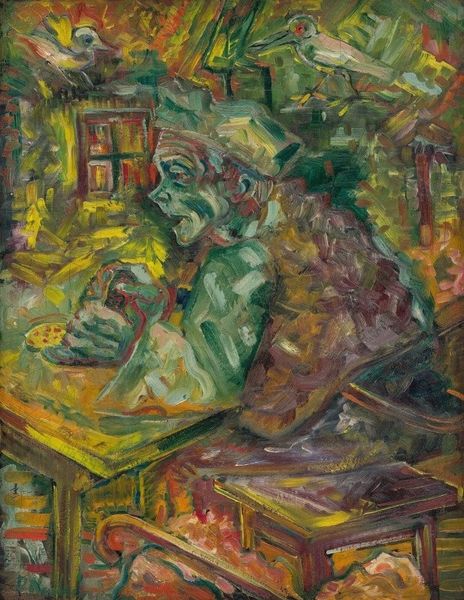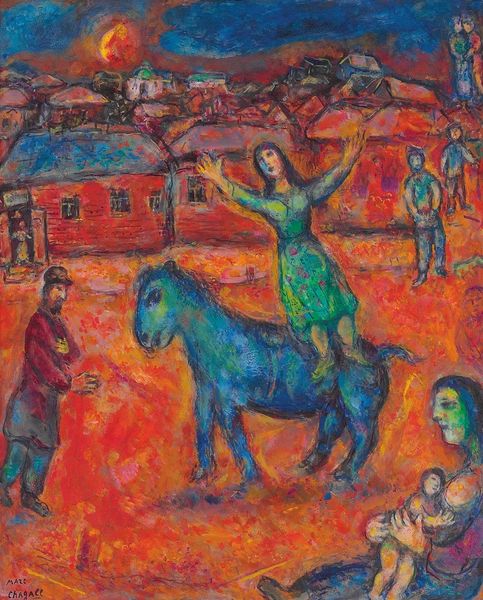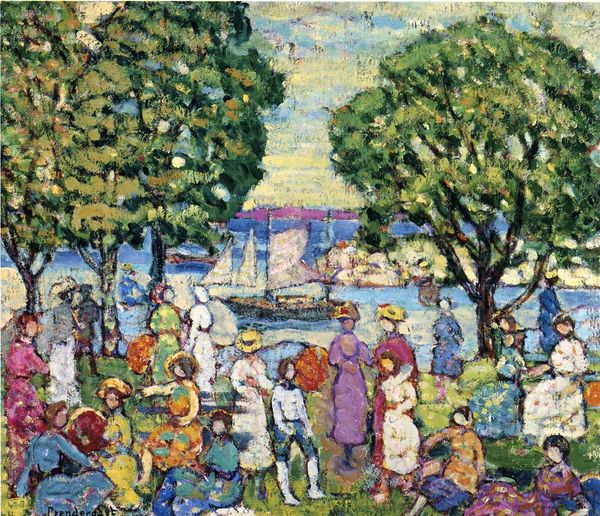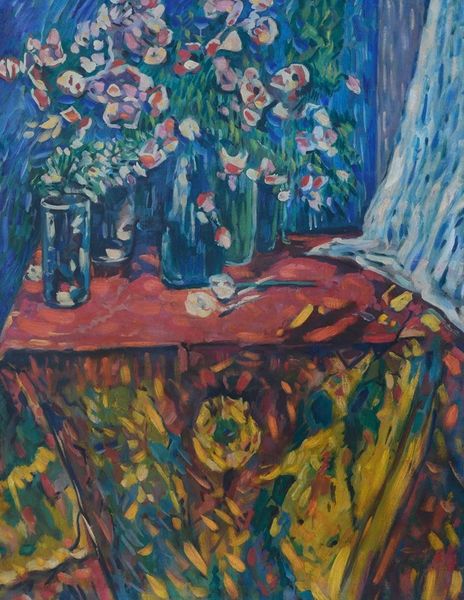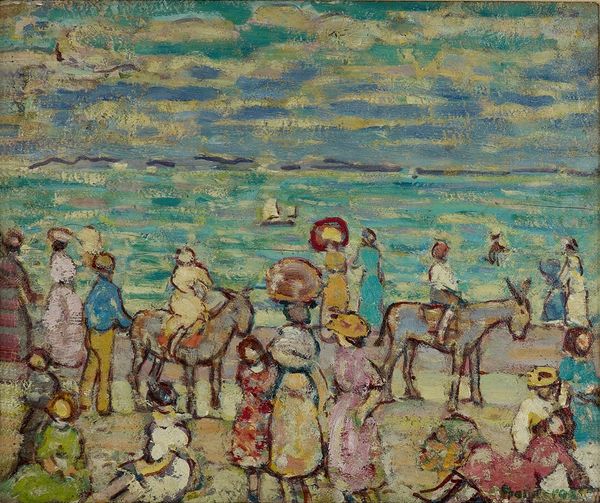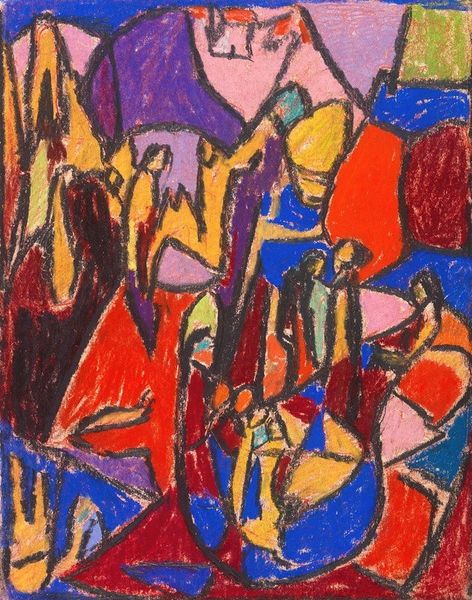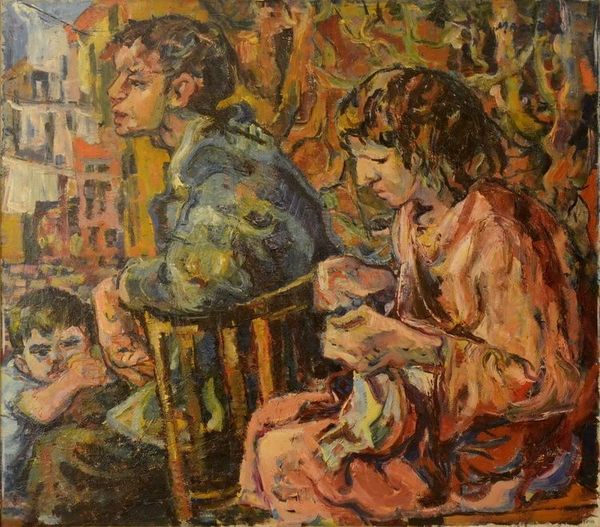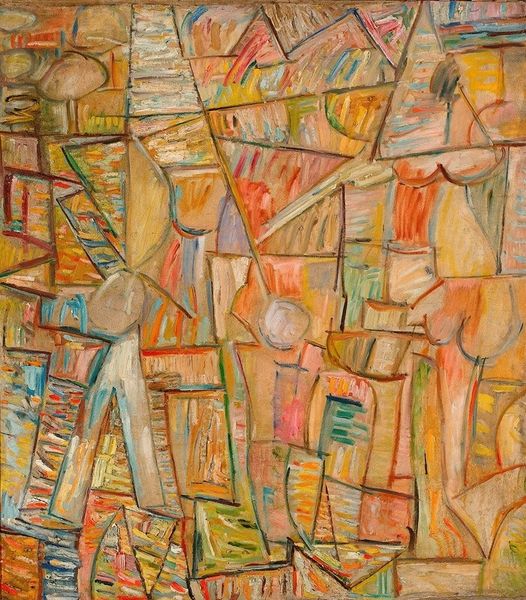
Copyright: Public Domain: Artvee
Editor: So, here we have Zygmunt Waliszewski’s "The Feast," created in 1933, a tempera painting depicting, well, a feast. It has such a strange, dreamlike quality. It reminds me a bit of looking at a slightly faded, old photograph. What do you see in it? Curator: It’s interesting you mention the photograph. Waliszewski’s work often exists in this liminal space, between the past and a sort of imagined reality. "The Feast," painted in 1933, appears almost as a commentary on the decadence and societal upheaval brewing in Europe. Do you see how the figures, while engaged in celebration, also seem disconnected and almost spectral? Editor: I do, now that you mention it. It's not exactly a joyful gathering, is it? It feels almost...anxious. Is that related to the Expressionist style? Curator: Precisely. Expressionism, especially in the interwar period, used distortion and heightened color to express internal anxieties and social critiques. Waliszewski employs these elements to create a sense of unease, reflecting a pre-war Europe teetering on the edge. Consider also, how the composition, a genre painting, subverts the classical associations of celebration and communal joy. What's taking place in the background with the architectural details and that tower? Editor: Hmm… it looks like there's a separation happening in terms of architectural style? This section gives the impression that one can step down from modernity straight back into the older medieval setting. Curator: Exactly. Notice how it all plays into the tension between tradition and modernity, between revelry and impending doom? This piece underscores how deeply art is embedded in and comments on, the social fabric. Editor: It's fascinating how an image can carry so much cultural weight and historical context, almost acting as a mirror reflecting the anxieties of a specific era. Curator: Indeed. Looking at art this way not only deepens our understanding of the piece itself, but also of the societal forces that shape its creation and interpretation. It gives a strong perspective on the times it was created in, and its continued existence.
Comments
No comments
Be the first to comment and join the conversation on the ultimate creative platform.
